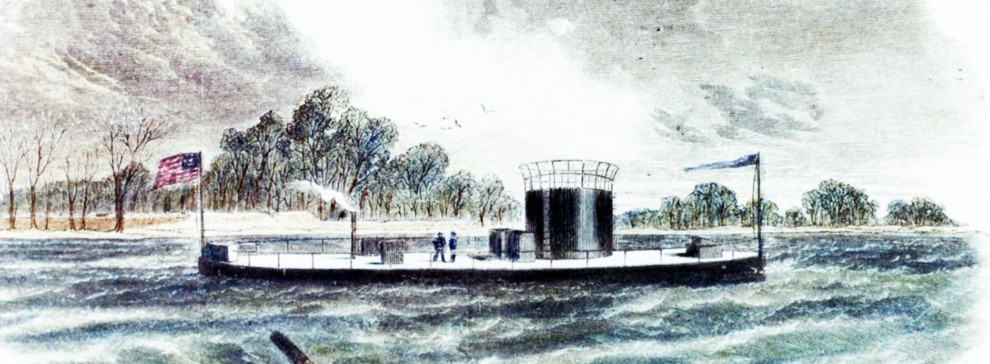
USS Monitor (Ironclad)
Designed by Swedish engineer and inventor John Ericsson, the U.S. Navy's first ironclad, USS Monitor, was commissioned on February 25, 1862 at New York City, New York. An innovative warship, she had a thick-armored round turret which was twenty-feet in diameter. Rotated by steam power, the turret could fire nearly 360 degrees from a pair of eleven-inch Dahlgren smoothbore shell guns. Departing for Hampton Roads, Virginia, Monitor arrived on March 9 and immediately engaged in battle with Confederate ironclad, CSS Virgnia, which was the first battle between ironclad warships. The previous day, Virginia sank both USS Congress and USS Cumberland. Though the battle with the Confederate ironclad was a draw, the engagement prevented the Confederates gaining control of Hampton Roads, which would have disrupted the Federal blockade. Remaining in the area, Monitor also served along the James River and was ordered south in December. Encountering a storm on December 31, she foundered and was lost along with sixteen Sailors of her sixty-two man crew. Located in 1973, the Mariner's Museum raised the innovative steam engine and some other parts at that time. In the summer of 2002, Monitor's gun turret was raised and now resides at the Mariner's Museum, Newport News, Virginia, for historic preservation.
A model of Monitor can be found in the Civil War section of the National Museum of the U.S. Navy.
Image: NH 73624-KN: USS Monitor, engraving published in Harper's Weekly, March 27, 1862. Courtesy of the Navy Art Collection. NHHC Photograph Collection.



